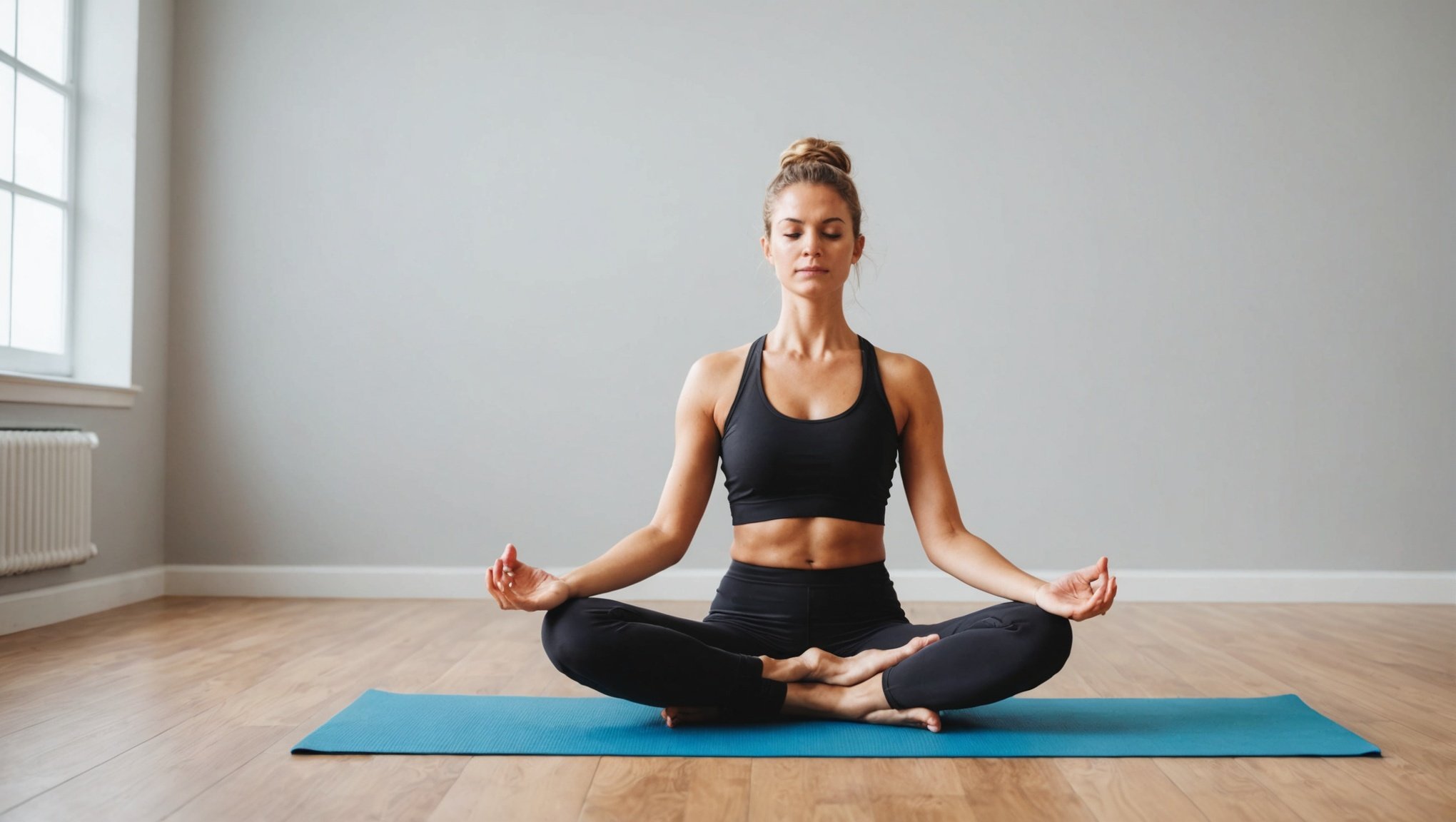As the sun rises on another day, it’s normal to feel a certain amount of stress creeping into your life. Whether it’s due to work, personal relationships, or the simple ebb and flow of daily life, stress is an inevitable part of our existence. However, you don’t have to let it consume you. With a little bit of dedication and the right tools, you can learn to manage your stress effectively and even use it to fuel personal growth. One of the most effective ways to do this is through yoga, a practice that combines physical postures, breathing exercises, and meditation to promote overall well-being and stress relief. In this article, we will guide you on how to design a personalized yoga routine that can help ward off stress.
Understanding Your Stress Triggers
Before we delve into yoga asanas, it’s crucial to understand what causes your stress. Recognizing the triggers can help you address them more effectively. It might be long hours at work, a toxic relationship, overwhelming responsibilities, or even the fear of the unknown. Keep a journal of your daily activities and note when you feel most stressed. This will help you connect the dots and identify patterns in your stress triggers. Once you’ve identified these triggers, you can incorporate specific yoga practices to help manage and alleviate that stress.
Also to discover : How to Safely Introduce Retinoids into Your Skincare Routine for Anti-Aging?
Choosing the Right Yoga Style
Not all yoga is created equal. There are various styles of yoga, each with its own unique focus and benefits. For instance, Hatha Yoga is ideal for beginners and focuses on basic postures and breathing techniques that promote relaxation and stress relief. Vinyasa Yoga is a more dynamic practice that links movement with breath, helping to release tension and anxiety. Yin Yoga involves long holds in restorative postures, which promotes deep relaxation and stress release. It is important to choose a style that resonates with you and aligns with your stress management goals.
Designing Your Yoga Routine
With a solid understanding of your stress triggers and the right yoga style, it’s time to design your routine. Start by establishing a regular practice schedule. Consistency is key in yoga, as it allows your body to adapt and respond to the poses over time. A 20-minute daily practice can go a long way in managing stress.
Additional reading : What Is the Ideal Frequency for Exfoliating Sensitive Skin?
Next, choose postures that target your stress. Each posture in yoga has specific benefits. For example, forward bends are calming, backbends are energizing, and twists are detoxifying. Include a combination of poses that align with your stress management goals. For instance, if you’re often anxious, include calming poses like Child’s Pose, Savasana, and forward bends.
Incorporating Breathing Exercises and Meditation
Breathing exercises, or Pranayama, and meditation are essential components of yoga that significantly aid in stress relief. Deep, controlled breathing helps to calm the mind, regulate the heartbeat, and reduce cortisol, the stress hormone.
Meditation, on the other hand, promotes mental clarity and relaxation. It can be as simple as focusing on your breath, visualizing a peaceful scene, or repeating a mantra. Incorporate 5-10 minutes of Pranayama and meditation at the beginning or end of your yoga routine for maximum benefits.
Nurturing a Mind-Body Connection
Lastly, don’t forget that yoga is more than just a physical practice; it’s a mind-body connection. As you move through your yoga routine, be mindful of each breath and each movement. Be aware of how your body feels and responds to each pose. This mindfulness not only enhances the stress-relief benefits of yoga but also promotes a greater sense of self-awareness and introspection.
Creating a personalized yoga routine for stress relief doesn’t have to be a daunting task. By understanding your stress triggers, selecting the right yoga style, designing a balanced routine, and incorporating breathing exercises and meditation, you can effectively manage your stress and enhance your overall well-being. So roll out your mat, and let the journey to stress-free living begin!
Nutrition for Stress Relief: The Role of a Balanced Diet
When designing your personalized yoga routine for stress relief, incorporating a balanced diet can yield significantly positive results. The food we consume plays an integral role in our mental and emotional health, affecting our mood, energy levels, and stress response.
Nutrition is often overlooked in stress management, but it can make a significant difference. Certain foods can increase our stress levels, while others have a calming effect on the body. High-sugar or caffeine-laden foods can cause energy crashes and heighten feelings of anxiety. On the other hand, foods rich in B vitamins, magnesium, and omega-3 fatty acids can help reduce stress.
Omega-3 fatty acids, found in fish, flaxseeds, and walnuts, have a positive effect on mood and reduce inflammation, which can rise under stress. B vitamins, found in whole grains, meat, and eggs, play a significant role in brain health and can help reduce feelings of anxiety and depression. Magnesium, found in spinach, almonds, black beans, and avocado, can help reduce stress and improve sleep.
Incorporating these stress-reducing foods into your diet can boost the effectiveness of your yoga practice. For example, starting your day with a bowl of oatmeal topped with flaxseeds and walnuts can give you a dose of stress-reducing nutrients. Alternatively, a dinner of grilled salmon, quinoa, and steamed spinach can help you unwind after a stressful day.
Remember, it’s not about strict dietary rules or restrictions, but balance. Regularly consuming a variety of nutrient-dense foods can help reduce stress, boost your mental health, and support a successful yoga practice.
Conclusion: Embrace a Yogic Lifestyle for Lasting Stress Relief
Tackling stress is not a one-time event but a long-term commitment. By designing a personalized yoga routine for stress relief, you are taking a significant step toward better mental health. However, it’s essential to remember that yoga is not just about the physical postures; it encompasses a holistic lifestyle that includes mindful eating, breathing exercises, meditation, and a positive mindset.
Incorporate these practices into your daily life, not just on your yoga mat. Take breaks during your workday to breathe deeply or do a quick yoga stretch. Make mindful eating a part of every meal. Spend a few minutes each day in meditation. These small practices can have a profound impact on your stress levels and overall mental health.
Embracing a yogic lifestyle doesn’t mean you’ll never experience stress again. Stress is a natural part of life, and it’s how we handle it that matters. By integrating yoga and its principles into your everyday life, you can foster resilience, cultivate peace, and navigate life’s challenges with grace and ease.
Above all, remember that self-care is not selfish. Your mental health matters. So, roll out your mat, breathe deeply, and embark on your journey toward stress-free living. With a personalized yoga routine and a yogic lifestyle, stress relief is within your reach.











